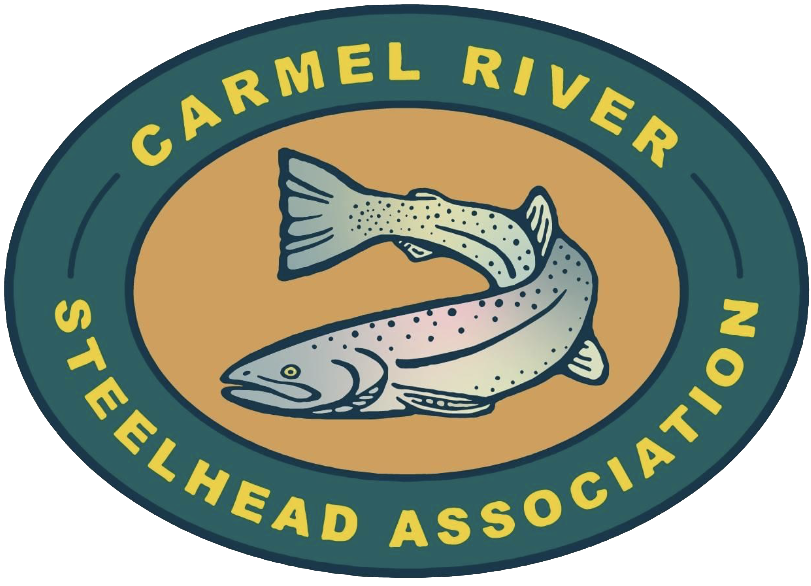In 1997 the Carmel River was listed as one of the ten most endangered rivers in the United States. There were many reasons for this listing including loss of habitat for steelhead. CRSA has worked for over forty years to rebuild habitat for steelhead and other species. Learn more about this program.
Striped Bass Removal
For as many years as there have been bass in the lagoon CRSA has advocated to have them removed. We have asked the Fish and Game Commission to open the lagoon to bass fishing with no limit and no size restriction. We have asked National Marine Fisheries Service for a permit to remove the bass. To date the only permit issued has been to California Department of Fish and Wildlife, which has allowed their employees to fish for the bass in the employee’s free time. So far this method has had limited success.
CRSA is formatting a grant to remove and study the striped bass in a cooperative effort between CRSA, Department of Fish and Wildlife, National Marine Fisheries South West Science Center, and Cardno Entrix. The study will include the following elements: striped bass will be removed from the lagoon, their diets analyzed, and the effects of their removal on growth and survival of steelhead in the lagoon will be evaluated. The study will also generate accurate population estimates for both steelhead and striped bass, as well as quantify recolonization rates by striped bass.
The purpose of this multiple year feasibility study is to determine if striped bass can be removed annually from the Carmel River Lagoon, and if annual removals will improve the habitat for rearing steelhead. Goals of the project are: 1) determine if seining techniques found to be effective at removing steelhead from San Clemente Dam during the Carmel River Reroute will work in the lagoon. 2) Estimate the size of the striped bass and steelhead populations in the lagoon. 3) Determine striped bass re-colonization rates. 4) Analyze effects of striped bass removal on the growth and survival of juvenile steelhead. 5) Determine striped bass diet by analyzing their stomachs for steelhead presence and diet composition.
Hopefully we can get a permit from National Marine Fisheries Service for this project. If a permit is obtained we are confident funding from the State Coastal Conservancy will be awarded.
Small Woody Debris
In 2006 CRSA completed a Large Woody Debris Phase I project in the south arm of the Carmel River Lagoon and expects to complete a Phase II project in the river/lagoon transition zone in 2016.
We envision a Phase III Woody Debris project upstream where the river runs all year. Phase III would be a Small Woody Debris project. We would use small wood in lieu of large wood because if any wood breaks free, small wood will pass under any bridge and not cause flooding or bridge removal.
We are just starting the thought process on this project and have not settled on a location or time yet, but it is a necessary project and if CRSA does not do it, no one probably will.
